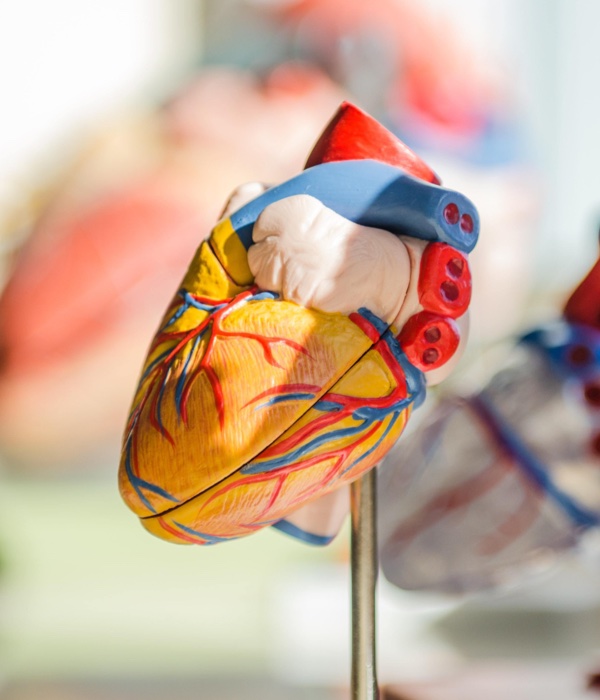How Two New Tests Are Outsmarting Heart Disease
Year after year, heart disease ranks as the leading cause of death in the world. In the United States, it kills about one in four people. Part of what makes heart disease so dangerous is that it often arrives unannounced. Even when family history warns of future problems, the underlying causes aren’t always clear.
You probably know the notorious risk factors: body weight, alcohol or tobacco use, bad cholesterol, high blood pressure, and diabetes. But in more cases than you might expect, these risk factors are conspicuously absent.

Thankfully, two new treatments—cardiac scans and fractionated cholesterol tests—offer clarity that has been impossible until now. Let’s take a quick look at what these tests do, who they’re for, and how they can help.
Cardiac Scans
Like the plaque your dentist scrapes from your teeth, heart plaque builds up slow and steady, spreading and thickening like a sticky film. But unlike oral plaque, heart plaque is a fatty deposit made up of cholesterol, calcium, and other waste in the bloodstream.
Heart plaque can be deadly. As it builds up inside your heart, it leaves less space for blood to flow. This, in turn, can lead to blood clots and heart attacks—making plaque one of the leading causes of heart disease.
Cardiac scans use x-rays to look into your heart and see how much plaque is there. They take about ten minutes, and the test is painless and non-invasive. A study by Johns Hopkins Medicine found that “15 percent of people believed to be at very low risk actually had high coronary artery calcium scores above 100 and were at relatively high risk of a cardiac event over the next seven years.”1 These tests are so effective that some European countries are considering them as a standard of routine care.
That doesn’t mean heart scans are right for everyone. For younger patients, there’s usually not much plaque to find, and not as much literature to know how to best interpret results. For patients with advanced age, it may be too late to reduce plaque levels. That’s why we recommend cardiac scans for patients in their 30s, 40s, and 50s. For this age group, cardiac scans can reveal problematic plaque far earlier than any other test
Fractionated Cholesterol Tests
We all know that cholesterol levels can predict heart disease. But most people don’t realize that only about half of patients with heart disease would be classified as “at risk” based on traditional cholesterol tests?2
That’s because traditional cholesterol tests don’t tell the whole story. Fractionated cholesterol tests, on the other hand, can provide deeper insight.
These tests work by fracturing cholesterol into smaller pieces. Once we can understand these pieces, we can create a much more detailed picture of a patient’s individual risk factors. For example, we recently worked with a patient whose total cholesterol scored as perfectly healthy. However, when the fractionated cholesterol test results came back, they revealed lipoprotein(a) levels of 250. A healthy lipoprotein(a) level is 75 or below. Thanks to fractionated cholesterol testing, we could take action to reduce the patient’s risk—a risk that would have been missed by standard measures.
The results are in. Now what?
While specific treatments always depend on individual test results, there are some general next steps that often apply. If a test shows cause for long-term concern, I’ll usually recommend that the patient take six to eight weeks to be the very best they can be. This means following a plant-based diet rich in vegetables, whole grains, nuts, and seeds. Cutting fatty foods, tobacco, and alcohol. Getting daily exercise. Taking sleep seriously.
After some time to reset, we can see whether their numbers have changed for the better. If they have, the patient is already on the path to reducing their long-term risk of heart disease. But if lifestyle changes aren’t enough, we can look at proven medications like statins or aspirin.
If you’re thinking of getting checked for early signs of heart disease, there’s never been a better time to schedule a consultation. February is American Heart Month, after all.
- Study shows value of calcium scan in predicting heart attack and stroke among those considered at either low or high risk. Johns Hopkins Medicine 2013, https://www.hopkinsmedicine.org/news/media/releases/study_shows_value_of_calcium_scan_in_predicting_heart_attack_and_stroke_among_those_considered_at_either_low_or_high_risk.
- Arsenault BJ, Despres JP, Stroes ES, et al. Lipid assessment, metabolic syndrome, and coronary heart disease risk. Eur J Clin Invest 2010;40:1081–93.